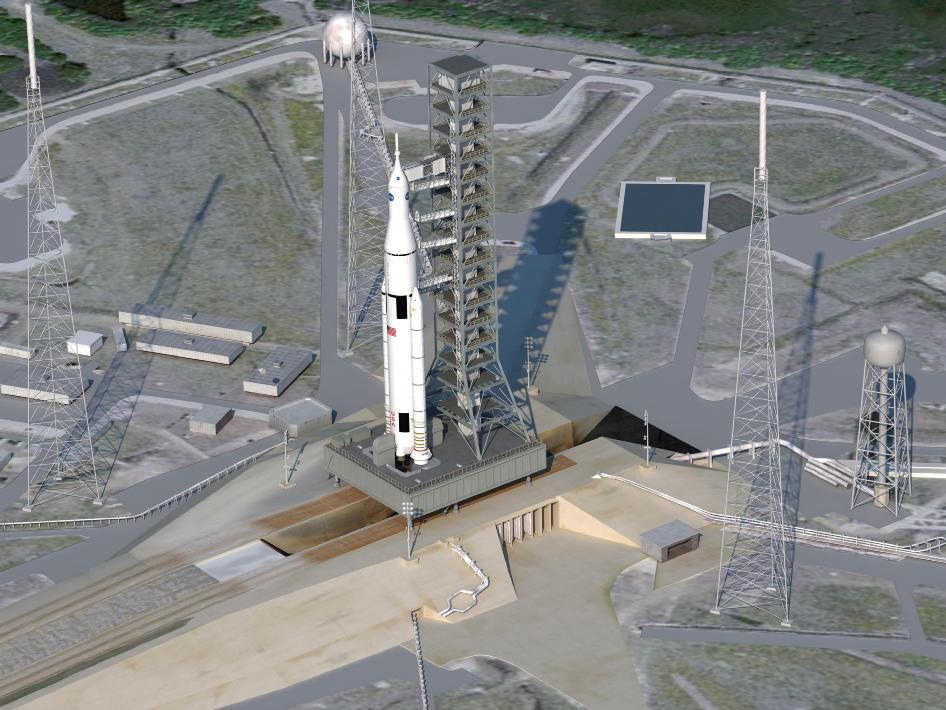
NASA's largest rocket yet, a vehicle under development called the Space Launch System (SLS), is on track for its first test flight in 2017, according to experts who spoke at the Space Tech Expo in Long Beach last month.
The rocket is designed to carry astronauts farther into the solar system than ever before. Meanwhile, NASA plans to leave travel to low-Earth orbit to commercial space companies, which are developing private space taxis to take over the job vacated by the retired space shuttle.
"We started working on Space Launch System concepts 10 years ago," said former astronaut David Leestma, a veteran of three space shuttle missions, who now heads the Technology Transfer and Commercialization Office at NASA's Johnson Space Center in Houston. "We want to take NASA well beyond the space station. The SLS will be the most powerful rocket ever built, and it will be safe, affordable and sustainable." [Photos: NASA's Giant Rocket for Deep Space Flights]
The new super-rocket will be able to boost 143 tons (130 metric tons) to orbit using many existing components in its construction. The main liquid-fueled engines are leftovers from the shuttle program, as are the giant solid rocket boosters that will flank the rocket. Only the core, or central structure, will be completely new.
The shuttle program ended with 14 flyable engines, and there are two more that could be ready to go with minimal work, said Jim Paulsen from rocket engine maker Pratt & Whitney/Rocketdyne. "We are in good shape with the [shuttle main] engines," he added.
The solid rocket boosters are being readied by Alliant Techsystems (ATK) in Utah. They need to be adapted for use on the SLS, and the changes are "right on budget and on schedule for a 2017 unmanned test fight," said Don Sauvageau, who works at the engine design firm. "Affordability is a big factor, and these will be 30 percent cheaper than they were for the shuttle," he said.
Atop the giant booster will be NASA's Orion capsule. Orion is slated for a test flight with the Atlas V rocket in 2014, during which the heat shield and re-entry systems will re-enter Earth's atmosphere at speeds similar to a lunar return. NASA hopes to have Orion ready for a crewed flight by 2021.
Get the Space.com Newsletter
Breaking space news, the latest updates on rocket launches, skywatching events and more!
The lifting ability of the SLS will allow the rocket to deliver payloads to a position called L2 (a stable orbit beyond the moon), perform an asteroid mission, or even fly an unmanned sample return from the moons of Mars. It would also allow NASA to send probes directly to planets like Jupiter without the lengthy gravity-assist swings by Venus and Earth as have been undertaken for missions launched by less powerful rockets. Transit times to the giant planet would be cut down to about three years.
The test flight in 2017 is planned to go beyond lunar orbit, with the upper stage of the booster powered by derivatives of Pratt & Whitney/Rocketdyne's J2 engines, which date back to the Apollo program.
In addition to the new components of the SLS, some reverse engineering of legacy hardware, such as the Saturn V's F-1 engines (capable of 1.5 million pounds of thrust), are being conducted. Whether or not such a large power plant will be built for future uses is unclear.
"We are ready to move beyond LEO into more ambitious missions," Leestma said.
Follow us @Spacedotcom, Facebook and Google+. Original article on SPACE.com.
Join our Space Forums to keep talking space on the latest missions, night sky and more! And if you have a news tip, correction or comment, let us know at: community@space.com.

Rod Pyle is an author, journalist, television producer and editor in chief of Ad Astra magazine for the National Space Society. He has written 18 books on space history, exploration and development, including "Space 2.0," "First on the Moon" and "Innovation the NASA Way." He has written for NASA’s Jet Propulsion Laboratory, Caltech, WIRED, Popular Science, Space.com, Live Science, the World Economic Forum and the Library of Congress. Rod co-authored the "Apollo Leadership Experience" for NASA's Johnson Space Center and has produced, directed and written for The History Channel, Discovery Networks and Disney.









